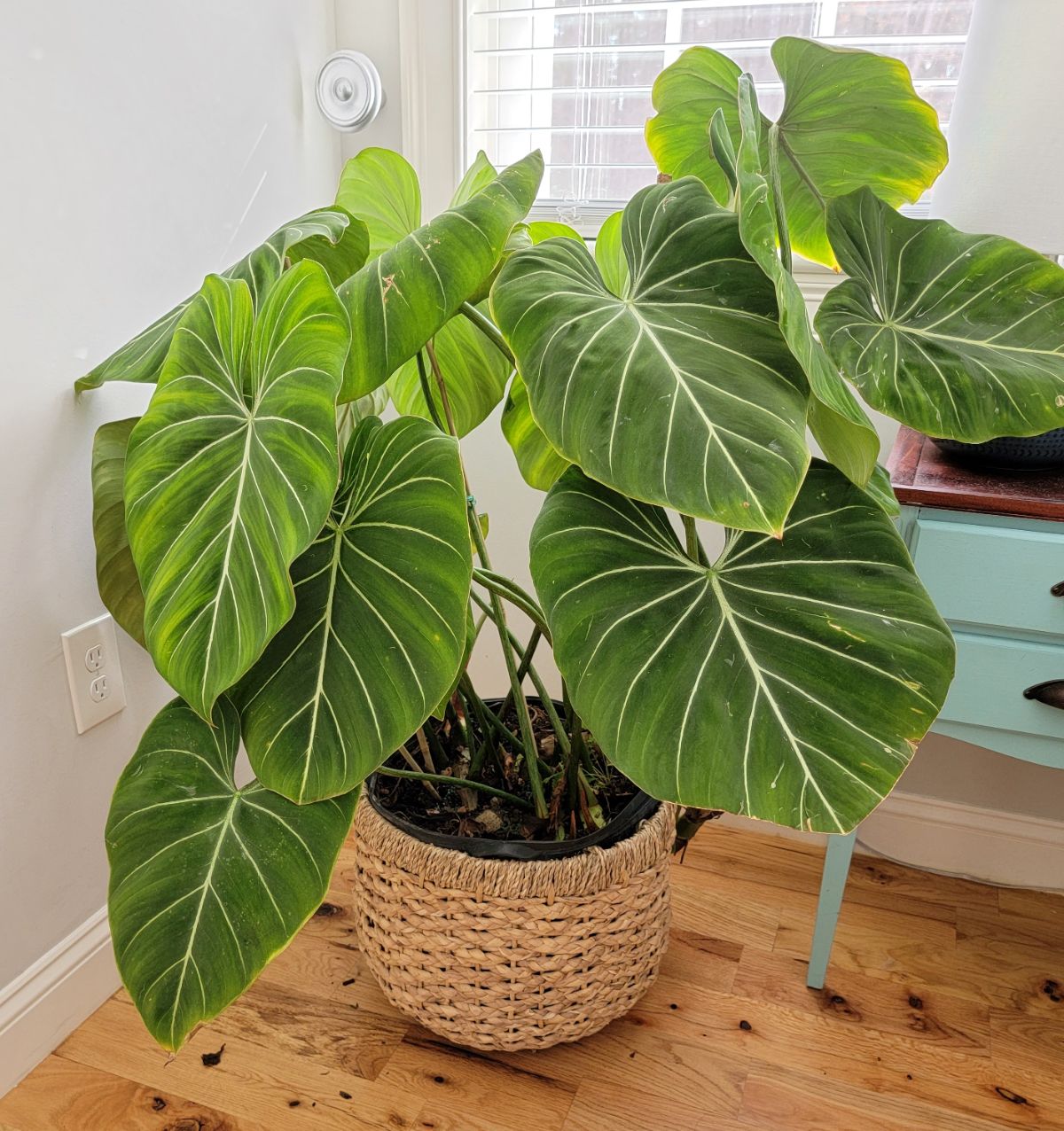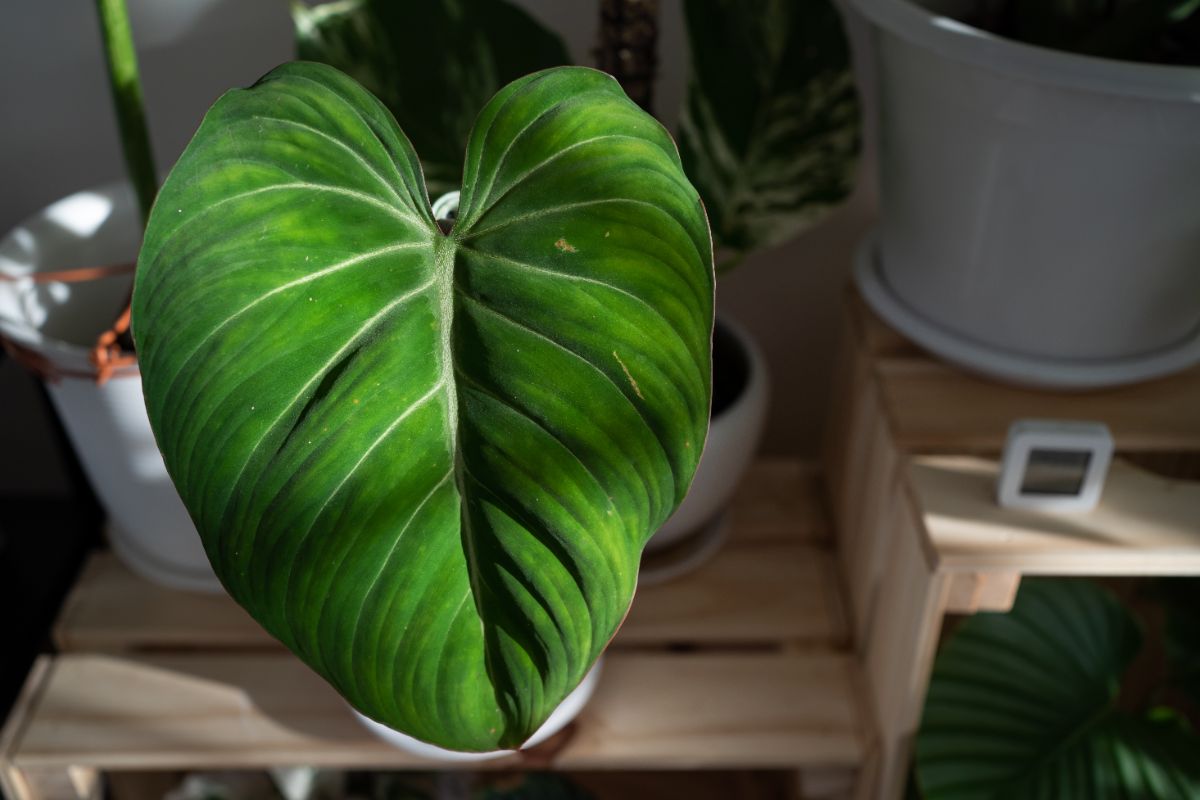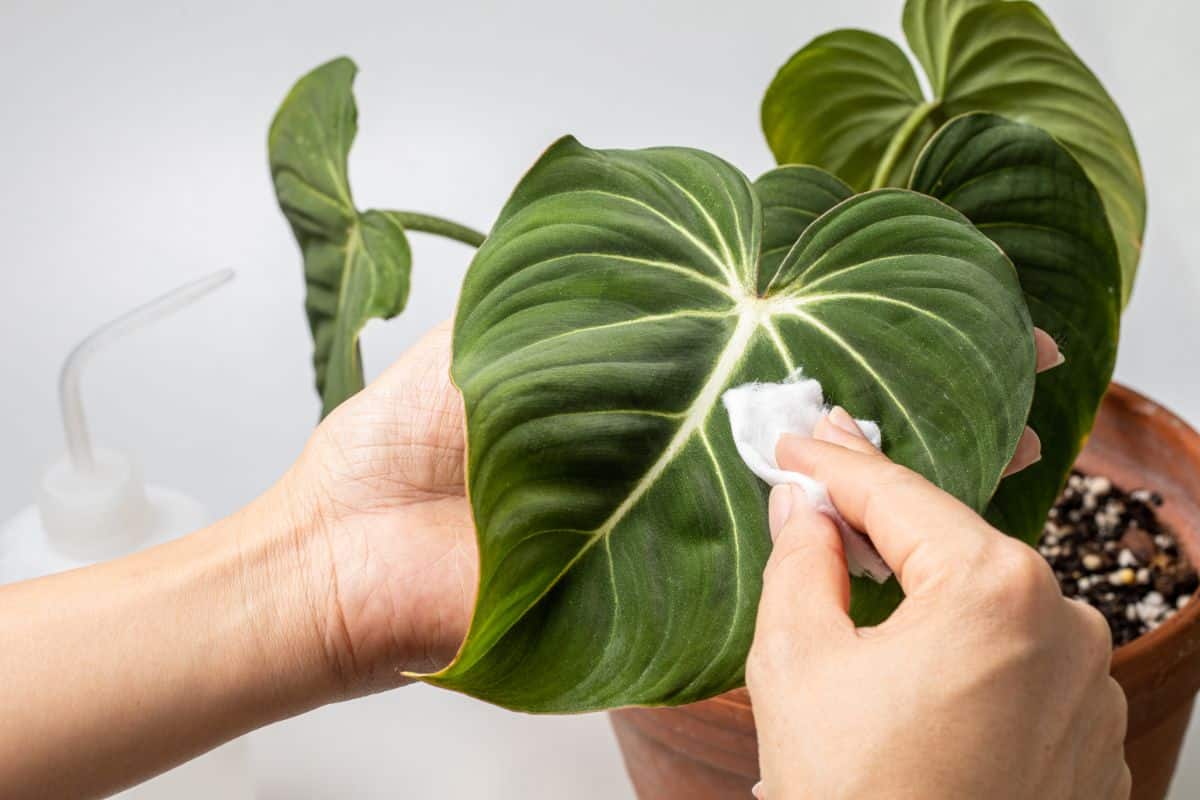Do you want to have a feeling like you're in the tropics? The best plant that can offer you that is philodendron gloriosum. It is an indoor plant with large velvety leaves growing around 2 feet wide, especially if you tend to it properly.

It has increasingly become one of the market's most loved and wanted plants. Philodendron gloriosum is an easy-to-grow and maintain plant. However, it will require special care if you want it to grow into a lovely jungle plant.
Growing and caring for philodendron gloriosum the right way involves moderate watering, adequate sunlight, average temperature, the right potting soil and medium, an accurate fertilizing routine, etc.
Now, let’s quickly look at philodendron gloriosum growing, propagating, and caring guide!
Jump to:
- Essential Facts About Philodendron Gloriosum
- Philodendron Gloriosum Growing Guide
- Light Needs
- Soil Needs
- Water Needs
- Temperature/Humidity Needs
- Fertilizing Needs
- Potting & Repotting Tips
- Pruning Needs
- Philodendron Gloriosum Varieties
- Propagation of Philodendron Gloriosum
- Common Philodendron Gloriosum Problems
- Frequently Asked Questions
- Conclusion
Essential Facts About Philodendron Gloriosum
| Common Names | Velvet Philodendron |
| Scientific Name | Philodendron gloriosum |
| Family | Araceae |
| Plant Type | Perennial |
| Mature Size | Height: 3 feet; Spread: 6 feet |
| Sun Exposure | Partial Sun |
| Soil Type | Well-drained Aroid Soil |
| Soil pH | Acidic, Neutral (6.1 to 7.5) |
| Bloom Time | Rarely Blooms indoors |
| Flower Color | N/A |
| Hardiness Zones | 10 to 11 USDA |
| Native Area | Columbia, South America, and Tropical Regions |
| Toxicity | Toxic to humans and pets |
Philodendron gloriosum is a tropical perennial with charming green leaves belonging to the Araceae or Aroid family. Given its crawling nature and underground rhizome, most gardeners consider it a terrestrial plant. In other words, it is a creeping plant featuring attractive velvety heart-shaped leaves.
Since it is a creeping plant, philodendron gloriosum doesn't require a moss pole; instead, it would need a narrow container long enough to accommodate its crawling habit. Its stems grow horizontally along the surface.
Meanwhile, the gloriosum is native to Colombia and other tropical areas, including Mexico, Peru, Ecuador, western parts of Brazil, and Venezuela.
Another exciting feature of this unique plant is its large dark green foliage, and its flowers resemble blooms on most aroid species out there.
However, if you're very interested in a quick-foliage fix, you'll get disappointed as this Philodendron is a slow performer. The gloriosum is a straightforward and low-maintenance plant, making it a beginner's favorite.
Philodendron Gloriosum Growing Guide
Philodendron gloriosum thrives in well-draining soil that contains peat, perlite, charcoal, and orchid bark. Optionally, it will survive in 100% sphagnum moss. It will need bright indirect light and slightly moist soil. Before you water, check to see if the soil's top one or two inches are dry.
The gloriosum grows best under temperatures between 65° to 85°F (18°C to 29°C), but feed it a half-strength liquid fertilizer monthly during spring and summer and reduce to once in two months during autumn and winter.
For optimal results, humidity should be set at an increased rate of 60 to 80%. Below are highlights of philodendron gloriosum growing and care guide.
Light Needs

If you want to maximize the health and size of the foliage of your philodendron gloriosum, provide it with bright enough, indirect light. The best position for it indoors is a west or east-facing window that receives morning sun and dappled afternoon light.
If you allow it to receive excessive direct sun, it will cause its leaves to scorch and will result in droopy growth. On the other hand, lack of sufficient light will hamper the excellent development of the already slow-growing plant, and the plant will grow leggy.
Soil Needs
Like other philodendrons, the gloriosum prefers well-draining, loosing potting soil rich in organic matter. Therefore, you can use rich peat/moss-based potting or soil mix (we recommend the Miracle Grow Moisture Control Mix).
However, as long as the gloriosum is concerned, pure sphagnum moss will provide a perfect growing medium, given that it meets every plant's requirement.
The plant prefers a solid base that can save moisture, keeping a humid environment. If the soil surface isn't providing the proper drainage you require, then report and add some perlite.
You can try several other options, including jungle mix or orchid potting mix, peat moss, orchid bark, peat-perlite, or peat-vermiculite. Peat is comparable to compost; for the right balance, the ideal range is pH 6.1 to 7.5. Good drainage is essential, so it would help if you line the base of your pot with some stones.
Water Needs
Philodendron gloriosum requires thorough watering, but you must ensure the excess water drains out. Check if the top one to two inches of soil is dry before you resume watering. However, if you're using appropriately chunky soil and following this guide, you don't have to worry about overwatering. White veins get more evident with leave maturity.
Temperature/Humidity Needs

Given that philodendron gloriosum is a warm-growing specie, it would be best to avoid any temperature under 55°F (13°C). Its best temperature range is around 65° to 85°F (18° to 29°C). Humidity-wise, the gloriosum loves high-humidity conditions.
Warm, dry air attracts spider mites, so you must be mindful of it by providing humid conditions. Therefore, it would help if you increase humidity during the winter season if you're running forced air heat.
Increasing humidity to jungle levels may be unrealistic, but ensure it is up to 50 to 60% in your home, and use a humidifier when necessary.
Using misters is not advisable, as they can get your plant's leaves and work nothing in terms of offering humidity. Remember to provide adequate air circulation when increasing humidity, as stagnant, humid air invites fungal problems, so you can gradually circulate your air using a fan.
Fertilizing Needs
You can feed the philodendron gloriosum with a liquid fertilizer at half-strength monthly during the spring or summer months. Endeavor to reduce feeding to every two months in autumn and winter to avoid destroying your plants.
The right fertilizer is crucial for healthy growth and larger gloriosum leaves. This plant can produce at least one leaf per month on average. If your plant is experiencing stunted growth and small leaves, it might signal that it lacks essential nutrients.
Potting & Repotting Tips
The best potting medium for your philodendron gloriosum is a long, rectangular pot with drainage holes. A round pot is not ideal since the gloriosum is a creeper and will reach the pot's edge, which will require too many repotting routines.
Once your plant outgrows its pot, it will stop growing roots in the soil. Its leaves also get smallish, which means it's time to repot.
Pruning Needs

Philodendron gloriosum doesn't require much pruning stress, apart from the occasional trimming of dead leaves. It is a regular occurrence for plants to drop their older foliage if they no longer need it.
If you feel your plant has grown slightly out of place and you chose to tame it, you can propagate it. Please continue reading to check its propagation method.
Philodendron Gloriosum Varieties
Different varieties of philodendron gloriosum are out there, which even helps to make things more challenging and exciting. It provides a good selection headache for plant enthusiasts, who are all lovely houseplants.
Philodendron gloriosum 'Dark Form': This gloriosum variety comes with darker, rounder leaves featuring delicate veining and a reddish outline on its leaf edges.
Philodendron gloriosum 'Zebra': This variety has bright white, more showy veins.
Philodendron gloriosum 'Pink Back': This is a philodendron gloriosum variety with pink-colored leaves at the back and pale pink veins.
Philodendron gloriosum 'Round Form': It offers rounder foliage without a point at the bottom.
Variegated Philodendron gloriosum: This variety is stunning, made up of regular foliage interspersed with yellow or cream variegation.
Propagation of Philodendron Gloriosum
The philodendron gloriosum is not like vining philodendrons. Hence, the best way to propagate it is through vegetative rhizome cuttings (the underground stem from this creeping variety). The following steps are the easiest way to propagate gloriosum for optimal production.
· With a pair of sharp scissors or pruning shears, locate an ideal section of rhizome (you can find it growing near the soil surface) and cut pieces with around two yards of leaves growing on it.
· Allow the end of the cutting callous over for a few hours before you pot up the individual section in a moist (but not soggy) sphagnum moss.
· Typically, cover the pot using a plastic bag to help save up moisture and humidity.
· Be patient for about 2 to 4 weeks to enable roots to become established on the cuttings. At this period, allow some air into the plastic bag every two days for a few minutes to prevent the microclimate from becoming stale.
· Move the cutting into a loose, well-drained potting mix.
Common Philodendron Gloriosum Problems

Even though the philodendron gloriosum plant is a stunning plant with low care and maintenance, it still requires the right conditions for optimal growth. There are common problems that are associated with this plant.
Leaves Turning Yellow
Whenever your gloriosum is experiencing yellowing leaves, there's nothing to worry about. Old foliage underneath the plant can become yellow and drop, which is part of the plant's natural cycle.
However, if it happens with newer foliage, it could be a sign of overwatering, underwatering, or overfertilizing.
Drooping Leaves
Once your philodendron gloriosum starts drooping leaves, it is an obvious sign that you need to get the moisture levels right. Soggy roots and, subsequently, root rot are very severe issues, but allowing the plant to dry out excessively is another apparent reason.
Browning Tips
Scorching leaves and browning leaves are signs of underwatering of your philodendron gloriosum or insufficient humidity levels.
It could also be that it is getting too much direct sun. Ensure you plant your gloriosum in the right spot and use a humidifier if you have a dry home.
Frequently Asked Questions
How long does it take Philodendron gloriosum leaves to unfurl?
Given that the philodendron gloriosum is a slow grower, it will take about one to two months for the leaf spike to reach its full opening. Once fully established, this plant can grow up to 0.9 meters tall.
Can I propagate Philodendron gloriosum in water?
It is possible to propagate your gloriosum in water. Rather than use a growing medium, place the rhizome with or without leaves into the water. You must follow the same step as when you multiply using sphagnum moss or soil.
Why are my Philodendron gloriosum drooping leaves?
The most common cause of drooping of gloriosum leaves is overwatering and underwatering. To control it, you must dip your finger into the soil to check if it is too dry or too wet before adjusting your watering as required.
What does the philodendron gloriosum flower look like?
The gloriosum flower is white and made up of a spathe and a spadix consisting of the flower itself, like most other aroids. The spathe covers the spadix.
Exactly how big can philodendron gloriosum leaves reach?
In its tropical wild, the leaves of the gloriosum can reach 36 inches. Indoors, given that conditions are far from ideal, they will grow pretty smaller. You must provide it with enough light if you want its leaf size to increase.
Conclusion

Philodendron gloriosum is not only just the most popular among philodendron species but also all plants. It's not a surprise, given that it is a stunning plant that is very easy to grow and maintain.
However, for optimal growth, you must provide the necessary conditions, including watering, sunlight, temperature, humidity, etc.




